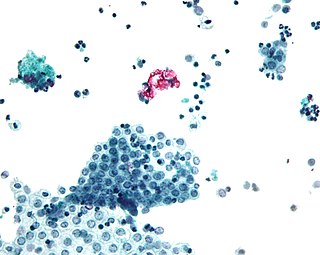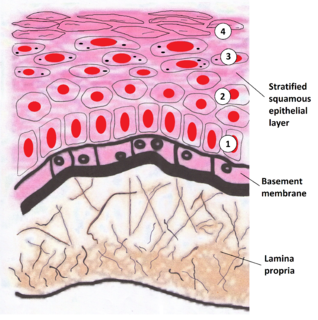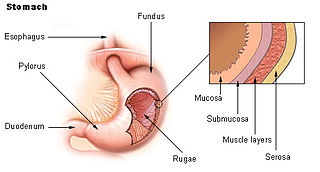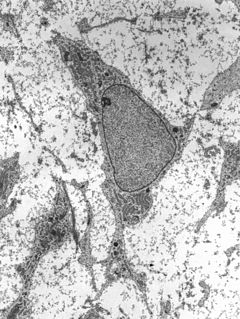| Tela subserosa | |
|---|---|
 Layers of Stomach Wall: | |
| Details | |
| Identifiers | |
| Latin | tela subserosa |
| TA | A12.1.08.009 |
| FMA | 77001 |
| Anatomical terminology | |
The tela subserosa (or just subserosa) is a thin layer of tissue in the walls of various organs. It is a layer of connective tissue (usually of the areolar type) between the muscular layer (muscularis externa) and the serosa (serous membrane).

In biology, tissue is a cellular organizational level between cells and a complete organ. A tissue is an ensemble of similar cells and their extracellular matrix from the same origin that together carry out a specific function. Organs are then formed by the functional grouping together of multiple tissues.

Organs are collections of tissues with similar functions. Plant and animal life relies on many organs that coexist in organ systems.
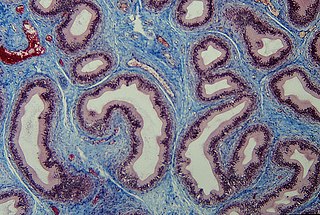
Connective tissue (CT) is one of the four basic types of animal tissue, along with epithelial tissue, muscle tissue, and nervous tissue. It develops from the mesoderm. Connective tissue is found in between other tissues everywhere in the body, including the nervous system. In the central nervous system, the three outer membranes that envelop the brain and spinal cord are composed of connective tissue. They support and protect the body. All connective tissue consists of three main components: fibers, ground substance and cells. Not all authorities include blood or lymph as connective tissue because they lack the fiber component. All are immersed in the body water.
The subserosa has clinical importance particularly in cancer staging (for example, in staging stomach cancer [1] or uterine cancer).
Cancer staging is the process of determining the extent to which a cancer has developed by growing and spreading. Contemporary practice is to assign a number from I to IV to a cancer, with I being an isolated cancer and IV being a cancer which has spread to the limit of what the assessment measures. The stage generally takes into account the size of a tumor, whether it has invaded adjacent organs, how many regional (nearby) lymph nodes it has spread to, and whether it has appeared in more distant locations (metastasized).

Stomach cancer, also known as gastric cancer, is a cancer which develops from the lining of the stomach. Early symptoms may include heartburn, upper abdominal pain, nausea and loss of appetite. Later signs and symptoms may include weight loss, yellowing of the skin and whites of the eyes, vomiting, difficulty swallowing and blood in the stool among others. The cancer may spread from the stomach to other parts of the body, particularly the liver, lungs, bones, lining of the abdomen and lymph nodes.
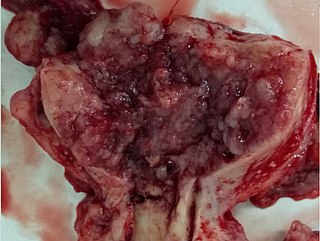
Uterine cancer, also known as womb cancer, are two types of cancer that develops from the tissues of the uterus. Endometrial cancer forms from the lining of the uterus and uterine sarcoma forms from the muscles or support tissue of the uterus. Symptoms of endometrial cancer include unusual vaginal bleeding or pain in the pelvis. Symptoms of uterine sarcoma include unusual vaginal bleeding or a mass in the vagina.
The subserosa ( sub- + serosa) is to a serous membrane what the submucosa ( sub- + mucosa) is to a mucous membrane.

The submucosa is a thin layer of tissue in various organs of the gastrointestinal, respiratory, and genitourinary tracts. It is the layer of dense irregular connective tissue that supports the mucosa and joins it to the muscular layer, the bulk of overlying smooth muscle.

A mucous membrane or mucosa is a membrane that lines various cavities in the body and covers the surface of internal organs. It consists of one or more layers of epithelial cells overlying a layer of loose connective tissue. It is mostly of endodermal origin and is continuous with the skin at various body openings such as the eyes, ears, inside the nose, inside the mouth, lip, vagina, the urethral opening and the anus. Some mucous membranes secrete mucus, a thick protective fluid. The function of the membrane is to stop pathogens and dirt from entering the body and to prevent bodily tissues from becoming dehydrated.


